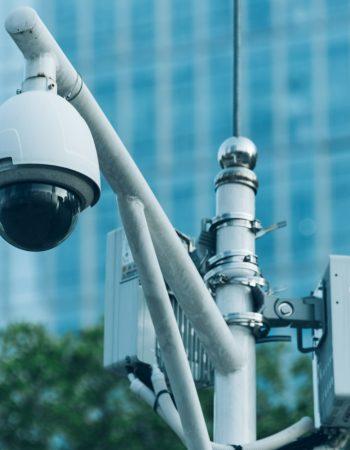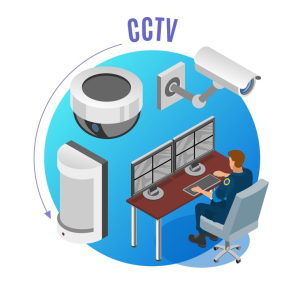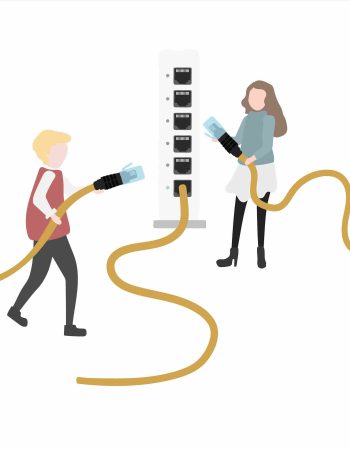Businesses in the United States lose an average of 5% of their annual gross revenue to fraud as reports of the Association of Certified Fraud Examiners show. Security cameras in the whole marketplace can help companies mitigate these expenses and providing data can ensure the preservation of privacy rights and regulatory compliance.
Employers and business owners thinking about installing a monitoring system should have various benefits according to their business requirements. Remember, it is impossible to hire enough physical security representatives every second of every shift.
Security care plays a significant role in safety and security at the workplace. It ensures to catch of miscellaneous activities in a particular area. With technology upgrades, the latest trends and practices are added to improve security camera functions at the workplace of an organization.
This complete blog will uncover the impact of security cameras on workplace safety, on how they help to build a secure work environment at a business organization. It also examines emerging trends and discusses best practices for their implementations to get an idea of how we can use this system more effectively.
Trends in Workplace Security Cameras
Advanced Analytics
One of the fastest-growing trends is advanced analytics, it can detect suspicious behavior, recognize potential security risks as well, and predict unhappiness to be alert. Facial recognition technology has capabilities that can help us to track unauthorized individuals in restricted areas, while object detection can alert security personnel to abandoned bags or suspicious.
The analytics functions are driven by Artificial intelligence, using algorithms to read the video data, know the context, and perform processes or actions related to security. It will take the security system of the workplace to the next level with higher capabilities and powerful programs.
Remote Monitoring and Management
One of the significant advancements in security camera technology is the capability to cover and manage your workplace remotely. With the advent of networked security systems, you can access live videotape feeds and recorded footage from nearly anywhere with an internet connection. With the rise of cloud-based surveillance results, remote monitoring, and operation of security cameras have become more accessible than ever. This trend enables businesses to cover their demesne in real-time from anywhere, using mobile bias or web cyber surfers. Remote access to security camera footage improves spot awareness and allows for a quick response to security events or emergencies.
Integration with Access Control Systems
Another emerging trend is the integration of security cameras with access control solutions. By integrating access control and security systems, associations can cover and track the movements of individuals who are authorized to enter an installation. This can help businesses identify assumed security risks and take applicable conduct to help them. It allows businesses to build a complete security ecosystem by using video surveillance with access to modern technologies like keycard readers and scanners.
It helps to ensure that only particular individuals have access to sensitive areas and offers a complete security area. This allows the labor force to view critical information in a single hindrance and we see this as overlayed access control data on a live camera feed.
Best Practices for Implementing Security Cameras
Strategic Placement
Properly positioning security cameras is crucial for achieving complete content and maximizing their effectiveness in surveillance. Before installation, it’s essential for businesses to conduct a thorough assessment of their workplace, relating high-threat areas, eyeless spots, and points of entry. These areas may include entrances, parking lots, corridors, and warehouse areas where unauthorized access or suspicious activities are more likely to occur. Security cameras should be strategically placed to give clear visibility of these areas, ensuring that implicit security risks are captured on camera. Additionally, cameras should be deposited to minimize obstructions such as structural elements, and proper lighting should be assured to maintain clear footage, particularly in low-light conditions.
Privacy Consideration
While security cameras are valuable tools for enhancing plant safety and security, it’s essential for businesses to prioritize employees’ privacy rights according to applicable laws and regulations. Before planting security cameras in the plant, businesses should easily communicate the purpose of surveillance to workers and gain agreement where needed by law. However, businesses should establish programs and procedures for the collection, storage, and use of surveillance footage, ensuring that it’s handled responsibly and in agreement with according to regulations. It’s important to designate sensitive areas such as restrooms, break apartments, and private services as limits for an operation to observe employee privacy and maintain trust in the workplace.
Regular Maintenance and Updates
Businesses should focus on regular maintenance and software updates to maintain the effectiveness and trustability of security camera systems. This includes conducting diurnal examinations of cameras to cover for signs of damage, tampering, or cooking. Lenses should be cleaned regularly to ensure clear and unstopped views and any issues with recording or storage outfit should resolved effectively and on time. However, businesses should stay informed about software updates and security measures released by camera manufacturers that apply them as demanded to attack vulnerabilities and ensure optimal performance. Active conservation and updates according to need can reduce the risks of equipment failure as well as downtime. Additionally, it ensures that their security cameras are always operating at their peak performance.
Conclusion
In conclusion, implementing security camera installation in the workplace requires careful consideration of strategic placement, privacy considerations, and regular maintenance and updates. Strategic placement ensures maximum content and effectiveness by relating high-threat areas and minimizing eyeless spots. Privacy considerations are essential to respect employees’ rights and misbehave with applicable laws and regulations, ensuring transparency and trust among staff.
Businesses should take care of regular maintenance and updates as it is essential for the continued trustability and performance of security camera systems, mitigating vulnerabilities, and ensuring that they remain effective tools for promoting plant safety and security. By following these best practices, businesses can produce safer and more secure work surroundings while using the full potential of security camera technology.





